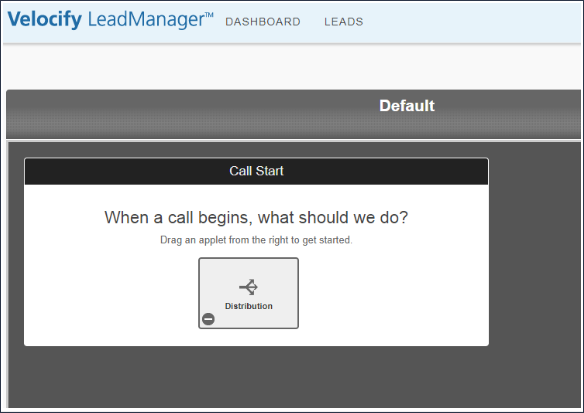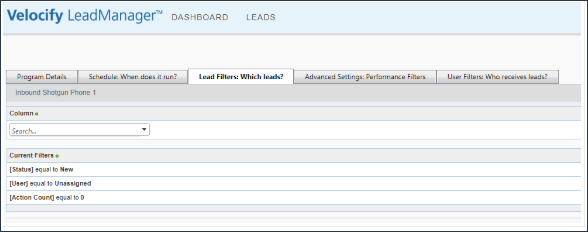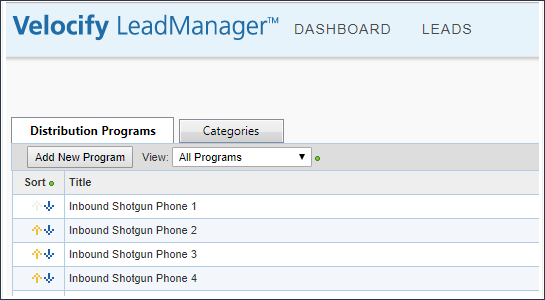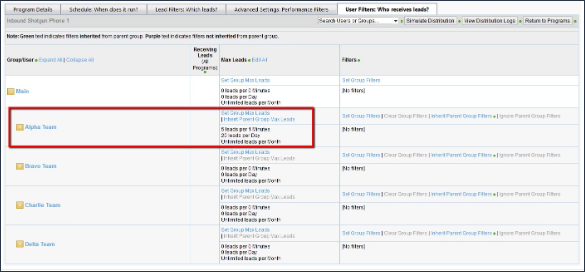Dial-IQ: Cascading Distribution
TOPICS COVERED IN THIS ARTICLE:
-
What is Cascading Distribution?
-
How Cascading Distribution Works for Inbound
ENVIRONMENT:
- Dial-IQ
DETAILS:
What is Cascading Distribution?
-
Cascading Distribution is a method of leveraging multiple programs in quick succession for inbound calls or warm transfers in order to distribute a lead.
-
Cascading Distribution is available to our Advance Edition customers using our advance outbound and/or Dial IQ Inbound products.
-
If you are interested in utilizing Cascading Distribution and would like to know more about its implementation with your specific database, please contact your account manager at Velocify.
How Cascading Distribution Works for Inbound:
Once you and your Account Manager have agreed to enable Cascading Distribution on your database, you'll want to verify that your call flow(s) is taking advantage of Velocify's inbound distribution intelligence by including a Distribution applet anywhere in your call flow.
In the example below, an inbound call from a lead is going to immediately go through an available inbound distribution program and be routed to a user without any greetings, menu prompts, and so on.

Now that your call flow includes at least 1 Distribution applet, the system will be able to leverage multiple inbound programs in a row as long as the lead qualifies for distribution for each of those programs.
Let's take a look at the Lead Distribution page which houses all of your databases distribution programs. In the example below, this account has 4 inbound distribution programs.
As a best practice, you'll want your inbound programs to reside above your push programs. Warm transfer programs should be placed at the top for ease of access and organization.

-
Each of those 4 inbound programs share the same program level filters which allow them to distribute the same kinds of lead.
-
In this case, these 3 program filters limit each inbound program to looking at brand new inbound calls.

As long as there are eligible users within each program (based on their User Max Settings and User Filters), the call flow will now be able to utilize all 4 of these inbound programs during a brand new inbound call.
You can refresh your memory on what makes a user eligible here.
Programs always distribute leads in a top-to-bottom fashion. So we can expect the inbound call to be offered by programs to users in this order:

Eligible users in the program Inbound Shotgun Phone 1 will be offered the call first, then those in Inbound Shotgun Phone 2, and so on.
For our example inbound programs above, we have 10 unique users eligible in each program. 40 users total are broken up into 4 teams: Alpha, Bravo, Charlie, and Delta teams.
The first program Inbound Shotgun Phone 1 only distributes leads to Alpha team. We achieved this by setting the user max settings of Inbound Shotgun Phone 1 for Bravo, Charlie, & Delta team to [0 leads per minute | 0 leads per day | 0 leads per month] which disqualifies them from being offered leads from this program:

-
Our intention is that a brand new inbound call will be offered to Alpha team first using program Inbound Shotgun Phone 1 and if they are unavailable--due to having their Leads or Calls buttons OFF, already on the phone, etc--then the 10 users in Bravo team will be offered the inbound call in the 2nd program Inbound Shotgun Phone 2.
-
If the system detects Bravo team is unavailable to take the call, then it will utilize Inbound Shotgun Phone 3 to offer the call to Charlie team.
-
And finally if the call can't be won by Charlie team, it will be offered to users in Delta team using the program Inbound Shotgun Phone 4.